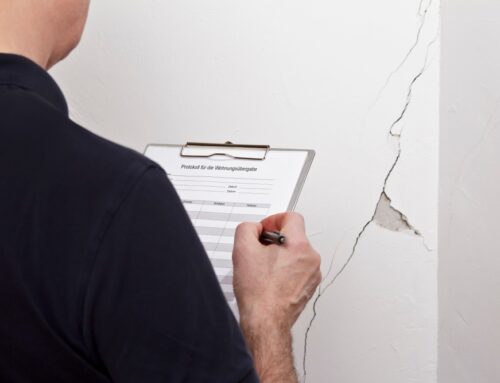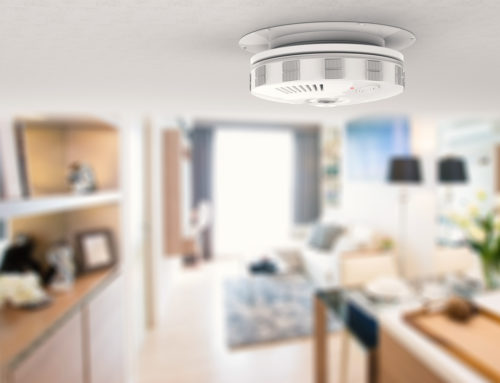So your tenant needs to move. They have gotten a new job in a different city, are getting married and moving in with their spouse, or that new baby is going to need a nursery and there just isn’t room in the house they rent from you. Or, they could have been an awful tenant and you just want them out with as little damage and as quickly as possible. Whatever the reason, it’s now up to you to perform their move-out, assess the property for any damage they may be held responsible and issue a refund of their security deposit. Either way, handling this sensitive phase in your property’s life can make the difference between a simple paint re-fresh before placing your next tenant or your unit being totally destroyed. By following the tenant move-out process and checklists below, you can set yourself up for a smooth transition.
Move-In Process
A successful move-out is preceded by a thorough move-in process involving your carefully-screened tenant. This sets the expectation of what condition they should return the property to you at the end of their stay. Consider the experience of renting a car. The salesperson gets your credit card, makes sure you can pay for the rental, then walks around the rental car with you detailing any dent, dig and scratch on a form they retain for when you return to make sure there is no new damage for which they can charge you.
The same holds true for renting properties, only I would suggest that you also take pictures, or better yet a video of every corner of the property. Yes, that includes the walls you just had patched and painted, the carpet you just replaced, the condition of the appliances, etc. Point out the conditions of each room and comment on the conditions, noting any existing damage on your Move-in/Move-out Condition Form. After you’ve completed the Condition Form with your tenant have them review and sign the document stating that they agree with the current property conditions. Give a copy to your tenant and keep the form for move-out as you do your final walk-through with your tenant.
Regular Inspections
What happens to a plant if you stop watering it? It dies, right? The same is true with any relationship. You may start off on a good foot with your tenant, but if you don’t maintain that relationship and show ongoing care for the property, the tenant will likely follow your lead of neglect. Be sure you have a regularly-scheduled inspection at least once every 6 months or a quarter to make sure that items like smoke and carbon monoxide detectors are fully functional, furnace filters are being changed on a regular basis, and the property is in overall good condition. Follow state laws on giving tenants notice before entering the property.
If you employ a property manager, be sure they are actually following through on the items you pay them for in your contract. Get to know your neighbors as they may be your best eyes on the property other than a security surveillance system. Be sure they have your contact information so they can alert you of anything out of the ordinary or in case of an emergency.
Make sure the tenant is paying rent on time. One of the first signs of trouble is if rent starts to become inconsistent. At this point, you need to stop and have an honest conversation with your PM or tenant before things get beyond a breaking point. You don’t want your tenants to skip out on you only to find out weeks later, your property is vacant and open to weather damages and thieves.
Though it is for both your and your tenants’ benefit for them to purchase renter’s insurance, be sure it stays in force. You can best do this by requiring them to list you as an additional insured on their policy. It doesn’t confer any coverage, but you will be notified if the policy lapses. Renter’s insurance is inexpensive at $10-$30/month and it protects both your tenant’s belongings and can protect them and you if they cause accidental damage to the property. It may be in your best interest to give them a rent discount to offset the cost. Explain to your tenant this is one of the ways you would like to give them the best chance at getting their full deposit back.
Overall, demonstrate that you care not just about getting rent, but about your tenant personally. No, you don’t have to invite them to your 4th of July picnic or become best friends with your tenants. In fact, I would advise against that. But, a small demonstration of care such as a holiday card or a small upgrade for renewal.
Tenant Move-Out Responsibilities
Tenants should be aware of the expectation of leaving the property in a move-in-ready condition. 30 days before move-out, send your tenant a Move-out Checklist, which includes specifics on what to clean, repair, and replace in the property. This checklist from Liberty Management Inc. is a great example of what to give your tenants before they move out.
Repairs
Though repairs may be noted during the move-out inspection process, I wouldn’t advise allowing your tenant to complete these repairs. Unless you have a tenant who is an experienced remodeler, the repairs may not be done to your specifications or standards and you will end up having to re-do the work. Also, though there may be some damage the tenant is responsible for, such as holes in sheetrock or doors, there also may be items that are simply needing normal maintenance and are not an item you would charge against the security deposit. It is up to you to decide which type of damage is which, but clearly state your position in your lease and remind them in the tenant Move-out Checklist. Your tenant’s early discovery of issues will help you with the rent-ready process, which may help you turn the property more efficiently.
Move-Out Process
Remember the Move-in/Move-out Condition Form? Go ahead and bring that with you to your move-out walk-through. You can do this on the last day with your tenant present and get keys or you can do it after they move out. It’s up to you and your tenant.
We suggest doing the walkthrough with your tenant as they may be interested to show you where and why the damage occurred. They may confess to certain damages if you point them out, and you may be able to resolve any disputes over damage on-the-spot instead of having to revisit them at a later date. Also, your tenant will be more prepared for your final inspection results and security deposit refund amount having walked the property with you. Lastly, it also means that you can double-check the temperature of the unit to protect yourself from frozen pipes or mold issues due to high humidity and temperature. At the end, have the tenant sign the form showing they agree to the property’s condition.
Damaged Items
Be sure to specify in your lease that the repair costs assessed during the final inspection for any damaged items will be subtracted from the tenant’s security deposit. If there is a lot of damage, they may end up owing you something and they should be prepared for that as well. That stated, your goal should be to get the tenant all of their security deposit returned. Letting them know this up-front will let them see that you are actually a reasonable landlord who isn’t out to “get them” and will set the tone for their stay.
Most allowances for normal “wear-and-tear” include the replacement of carpeting after a certain number of years. I’m sure many of you also may repaint often, perhaps even in between each tenant. These types of repairs are the costs associated with your investment property and should be tax-deductible items as a cost of doing business. These are not items typically covered by insurance, as “wear-and-tear” is a standard exclusion in any standard property policy form. Again, this is your cost of doing business so be prepared for normal “wear-and-tear” expenses. Be sure to check your state and local laws for what qualifies as “fair” in terms of “wear-and-tear” to stay out of legal trouble!
Keys
After they have signed off on the condition of the unit, you should obtain the keys. You should of course state in your lease and in any check-out communications that once the keys are returned, the tenant is giving up possession of the property. Be sure they have also given back any garage door openers, mailbox keys, parking tags, and the like. To prevent re-entry, be sure to change out the locks as soon as possible. You don’t want any “friends” ruining their just-completed A+ check-out.
Security Deposit
Now you will be able to do a final inspection without the tenant present. The return of the security deposit (if applicable) should only be done after you have completed your final inspection. You will of course need to obtain your tenant’s forwarding address so you can send them a check, bill them, or settle any disputes. Check your state and city regulations, but remember how we discussed that column for cost of repairs on your check-in/check-out sheet? You can now do some easy math and you are ready to give your tenant the appropriate amount of their security deposit back or bill them. In either case, send a copy of the itemized list with your check or bill to their new address and if they were a good tenant (or even just left your property in one piece), thank them for their stay!
Cash-for-Keys
So what do you do when a “normal” check-out scenario clearly won’t work with your current tenant? i.e. He/she is months behind on rent, you are going through the eviction process or there is animosity so great that the best course of action is to get the tenant moved out ASAP no matter the current state of the unit? You may want to utilize a technique called “Cash-for-Keys.” With Cash-for-Keys, the tenant simply agrees to leave the property within an agreed-upon time frame, giving the keys to the owner or property manager in exchange for a small sum of money.
While the cash amount and time frame may differ depending on each situation, the end goal is to lessen the tension between you and the tenant and get them moved out of your property without any major damage occurring along the way. This may help them to stop seeing you as the enemy or by enabling them to move on to a different living situation, they may give up their “beef” with you because their need is satisfied. Some may feel like Cash-for-Keys is giving in to a bad tenant, but it can often keep worse damage from happening to your property. You may still have a messy clean-up, but that is better than your property being burnt down by an angry former tenant. If you are able to execute a Cash-for-Keys agreement, make sure they agree in writing to leave the property in a “broom-clean” condition and after they vacate, be sure to change the locks immediately! Be sure all doors and windows are secured and monitor the property more closely in the few weeks following. We have seen occurrences where tenants move out only to break in and cause damage (think stealing all appliances, furnaces, copper water lines, and electrical) a week or so later because their belongings are now out.
You may be surprised that a perfect check-out involves so much work at the beginning and during your tenants’ stay, but the fact is, if you consistently care for your property and your tenants, the better chance you will have when it is time for them to move on. Now, what’s that I hear about “passive investing”? Is there really any such thing?
For information on coverage for tenant-caused negligent losses, learn more about our Tenant Protector Plan.






